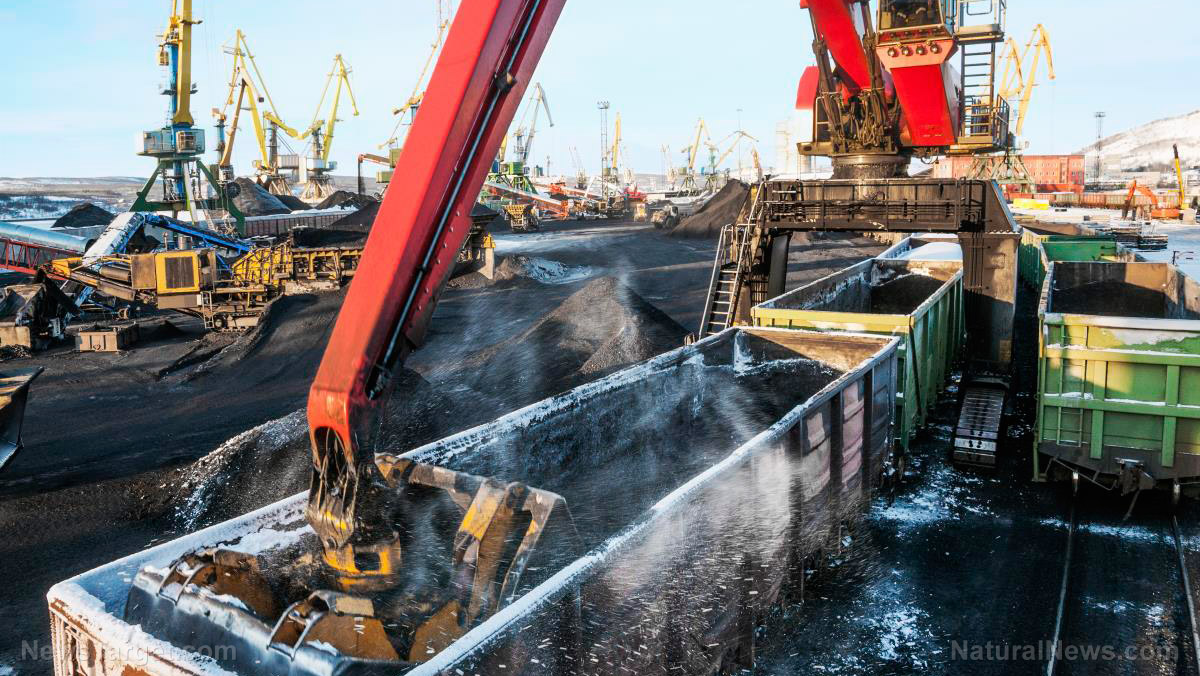Commerce and economic activity in China comes to virtual standstill amid worsening coronavirus outbreak
02/14/2020 / By JD Heyes

What would happen if the world’s second-largest economy were to grind to a halt for any length of time?
And what impact would the collapse of the second-largest economy have on global commerce, especially if that country was responsible for grinding out the lion’s share of consumer goods and spare parts for most of the rest of the world?
It would seem we’re on the verge of finding out the answers to both of those questions.
As the coronavirus outbreak worsens — meaning spreads — throughout China, reports are beginning to leak through the government’s information firewalls suggesting that nearly all economic activity and commerce in most of the country has been stunted.
In an analysis of available data including daily coal consumption (which would indicate electricity usage and the operation of manufacturing plants, as China relies on that fossil fuel for most power generation), real-time air pollution measurements (another indicator of factory and power production), and traffic congestion levels (an indicator of commerce and mobility), Zero Hedge concluded that “China’s economy appears to have ground to a halt.”
“That conclusion was cemented after looking at some other real-time charts which suggest that there is a very high probability that China’s GDP in Q1 will not only flatline, but crater deep in the red for one simple reason: There is no economic activity taking place whatsoever,” the site noted further.
Capital Economics, a commerce data firm, also used real-time information and a bevy of indicators to reach the same conclusion — that commerce has dramatically fallen and that Chinese citizens don’t appear to be engaging in much economic activity generally, all of which is a direct fallout of the spread of the virus and the government’s efforts to contain it (which are failing).
China, while a Communist government, years ago adopted market reforms and some capitalism in order to build its economy and enrich its citizens. But the virus appears to be undoing decades of progress. Like all other economies on the brink of failure, the lack of activity and manufacturing has created shortages of nearly everything, especially staples of life — food, for instance — and prices are rising to reflect those shortages.
‘This is because almost none of the manufacturers are back at work’
Which means unrest isn’t far behind, a “catastrophic mix in a nation of 1.4 billion” people, Zero Hedge notes.
Semi-autonomous Chinese media, like the Hong Kong-based South China Morning Post, are reporting similar downturns, especially the lifeblood of the Chinese economy, the manufacturing sector. (Related: The vast majority of our pharmaceuticals, vitamins and supplements are made in China – is coronavirus the black swan event that will collapse it all?)
Some manufacturing has fallen off 20 percent or more, including Nantong-based Foremost, as worker shortages caused by quarantines and illness have cut production levels.
And that’s just a hat-making company.
The paper noted further:
The outbreak, which has infected more than 60,000 people, has severally hit the manufacturing sector, with Hubei province, the epicenter of the outbreak which has been under a lockdown, home to almost 11 million migrant workers in 2018, according to the provincial government.
Chinese factories have been trending towards more automation, so many are still able to produce. But most others are incredibly labor-intensive and reliant, meaning the more workers who are ordered to remain out of the workforce until the coronavirus is gone, the longer the economic downturn will continue.
According to “official” Chinese government figures, there have been nearly 64,500 cases of coronavirus, almost 1,390 deaths, and some 6,770 recoveries.
Says Sibiao Chen, chief operating officer at SellerMotor, a cross-border e-commerce analytics company, a majority of Chinese retailers who sell products internationally have been affected by production delays.
“This is because almost none of the manufacturers are back at work,” Chen said. “We are seeing a surge in out of stock [items].”
“Other than Hubei province which will restart on February 14, the rest of the country was supposed to return to work on February 10. But daily passenger transit has been down over 80 per cent year-on-year since the Lunar New Year, suggesting that the majority of workers have not returned to work yet,” noted a report from Macquarie, an investment banking group.
Keep up with the latest news on the coronavirus at Outbreak.news.
Sources include:
Tagged Under: China, Collapse, commerce, coronavirus, economic collapse, electricity, factories, manufacturing, outbreak, pandemic, power generation, production, risk, Wuhan
RECENT NEWS & ARTICLES
COPYRIGHT © 2017 COLLAPSE.NEWS
All content posted on this site is protected under Free Speech. Collapse.news is not responsible for content written by contributing authors. The information on this site is provided for educational and entertainment purposes only. It is not intended as a substitute for professional advice of any kind. Collapse.news assumes no responsibility for the use or misuse of this material. All trademarks, registered trademarks and service marks mentioned on this site are the property of their respective owners.


















